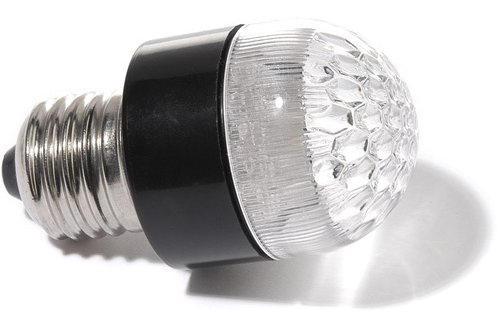 Energy-efficient LED bulb from C-Crane |
Conservation and Efficiency have a large potential to reduce our electricity needs. Government, industry and independent analyses have shown that cost-effective energy efficiency improvements could reduce electricity use by 27% to 75% of total national use within 10-20 years -- without impacting quality of life or manufacturing output. Cutting our energy use by 50% would make us as energy efficient at Japan and Europe already are.
The projections that have been made for maximum technical potential of efficiency savings are as follows: |
| Author | Projected Reduction | Quotes / Source(s) |
|---|---|---|
| U.S. Congress' Office of Technology Assessment | (in 12 years) OTA's own analysis concluded that cost effective, energy-efficiency measures could yield savings of one-third in total energy use in the residential and commercial sectors by 2015 over a business as usual scenario. In fact total energy use in these sectors would decline somewhat under an aggressive efficiency strategy. These two sectors combined are often dubbed "the buildings sector" because energy use for building systems (space heating and conditioning, ventilation, lighting, and water heating) has made up the overwhelming bulk of energy consumption in these two sectors. Reported energy use for the buildings sector includes building systems, appliances, office systems, and other electrical equipment. U.S. Congress, Office of Technology Assessment, Building Energy Efficiency, OTA-E-518 (Washington, DC: U.S. Government Printing Office, May 1992), p. 3. The above is quoted from "Energy Efficiency: Challenges and Opportunities for Electric Utilities," U.S. Congress, Office of Technology Assessment, September 1993, OTA-E-561, p62 (footnote #2) | |
| Electric Power Research Institute (the electric power industry's think tank) |
(in 10 years) "The Electric Power Research Institute (EPRI) has estimated that if the existing stock of equipment and appliances were replaced with the most efficient commercially available technologies, projected U.S. electricity use in the year 2000 could be cut by 27 to 44 percent without any diminution of services." Barakat & Chamberlin, Inc., "Efficient Electricity Use: Estimates of Maximum Energy Savings," EPRI CU-6746 (PaloAlto, CA: The Electric Power Research Institute, March 1990). The above is quoted in the OTA report, p63. | |
|
Rocky Mountain Institute |
(in 20 years) Arnold P. Fickett, Clark W. Gellings, and Amory B. Lovins, "Efficient Use of Electricity,"
|
Scientific American, September 1990, pp. 65-74. "The Negawatt Revolution," Keynote Address by Amory Lovins at the Green Energy Conference, Montreal 1989. |
Rocky Mountain Institute's 1989 projection showed that their projected 75% electricity savings could be acheived at an average cost of under one cent per kilowatt hour (buying electricity usually costs over 5 cents per kWh).
The average annual growth in electricity sales in the U.S. since 1980 is 2.3% according to the Department of Energy. The chart below assumes a 45% increase over 20 years, which is what was projected by the May 2001 Bush-Cheney Energy Plan (page x). This would amount to an average 1.9% increase in electricity demand over 20 years.
We need to maximize conservation and efficiency tactics so that this increase stops and overall demand decreases over time.
While the potential for demand reduction seems to differ greatly in the studies cited above, the Office of Technology Assessment's 33% and Rocky Mountain Institute's 75% figures fall within the same trendline range that the Electric Power Research Institute says is possible. This is because RMI's figure is over a longer time period. See below:

OTA = U.S. Congress Office of Technology Assessment (1993 report)
EPRI = Electric Power Research Institute (1990 report)
RMI = Rocky Mountain Institute (1990 report)
Rocky Mountain Institute chart on how to reduce electric use by 3/4ths in 20 years:

For more info:
- Alliance to Save Energy
- American Council for an Energy-Efficient Economy
- Rocky Mountain Institute
- Penn State Green Destiny Council Reports (includes reports on major renovations to a college biology building which saves lots of energy and money)
